PHNOM PENH (Day 19 - part 1)
This is the country's capital as well as its largest city. It was founded in 1434.
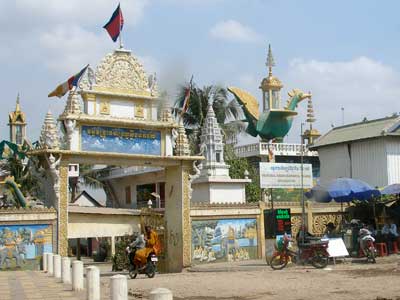
A nearby wat
We walked down to a corner restaurant and got some soup. Everything is made VERY quickly right there in front of you, so it isn't uncommon to sometimes get part of what the previous person ordered. In my case, that was a long cuttlefish tentacle (complete with suckers at the tip) in my vegetarian soup. Nothing kills an appetite quicker, I tell ya!
The roaming vendors and beggars were relentless and we were unable to eat in peace. One guy even hit us up three times! We noticed that they didn't bother any of the locals though.
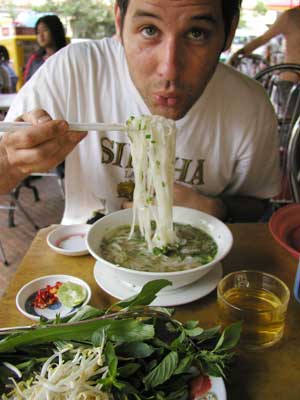
Back at the hotel, Sophet (pronounced So-pet, our hired driver for the day), picked us up and drove us a short was to Tuol Sleng.
From 1975 to 1979, the country was ruled by the Khmer Rouge (French for Red Khmer), led by Pol Pot. Beginning in the 1960s, Khmer Rouge was the armed wing of the Communist Party of Kampuchea (their name for Cambodia). As they gained support and momentum, slowly taking over the countryside by force and finally conquering Phnom Penh in 1975.
Pol Pot wanted to return the country to an agrarian nation, self-sufficient in their communal living. He forced people to move from the cities into the countryside to work on collective farms, cut them off from the rest of the world, and abolished money, private property and religion.
Anyone thought to be an enemy, especially any kind of intellectual, was tortured and killed. Sometimes that simply was because they wore glasses or knew a foreign language. Hundreds of thousands of others died from disease, starvation or exhaustion from being forced to do extremely hard labor. All told, close to 1.7 million people, or more than one-fifth of the country's population, died.
Special imprisonment and torture centers were set up. At Tuol Sleng (or s21), as many as 17,000 men, women and children were held over the four years.
The Khmer Rouge government was finally overthrown in 1979 by Vietnamese troops.
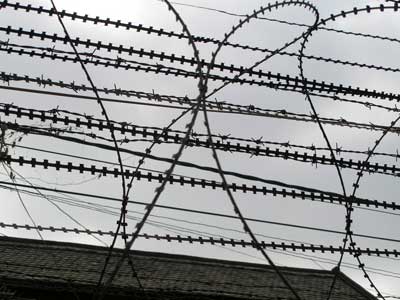
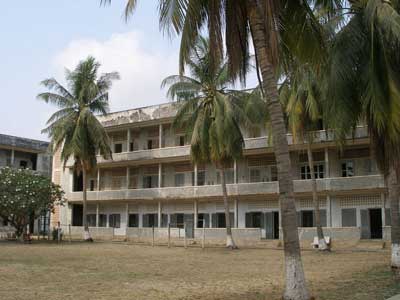
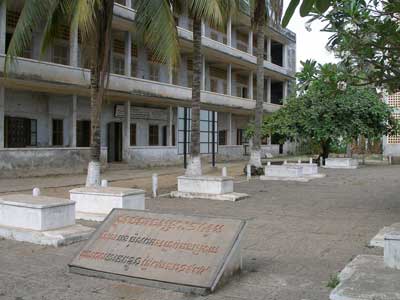
Tuol Sleng used to be a high school.
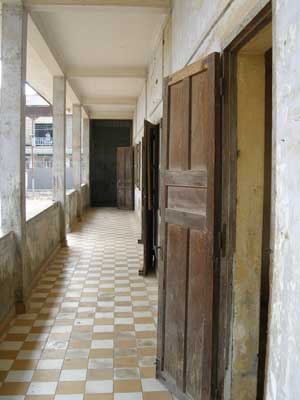
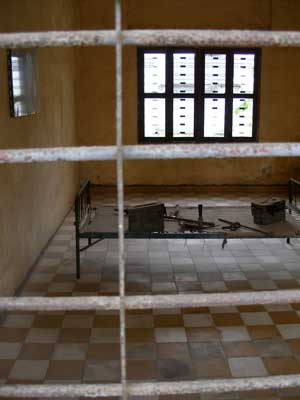
Upstairs


People were chained to the beds and tortured, often to death. This was intended to get confessions from people.
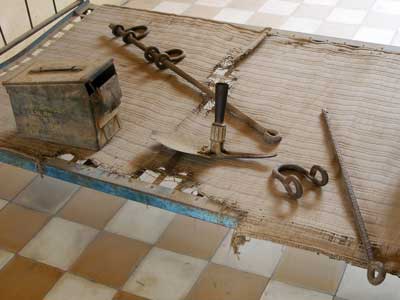
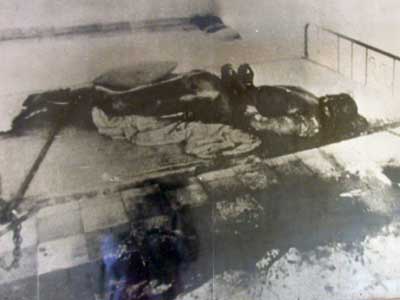
There were still blood stains on some of the floors.
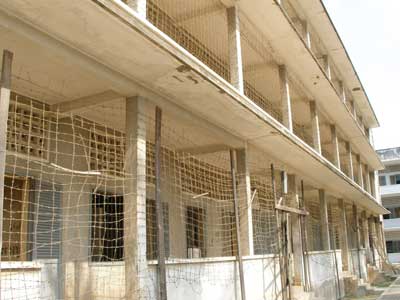
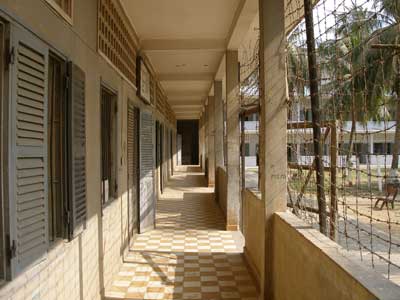
Downstairs
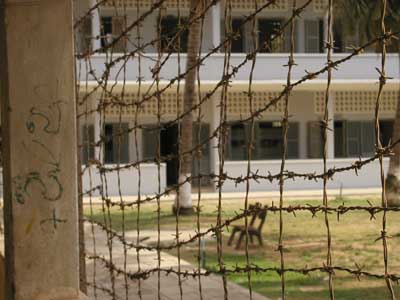
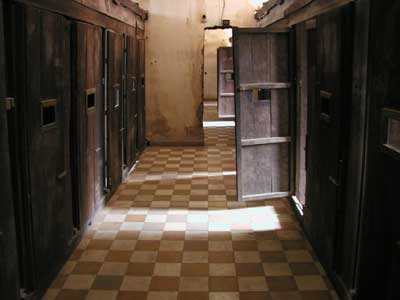
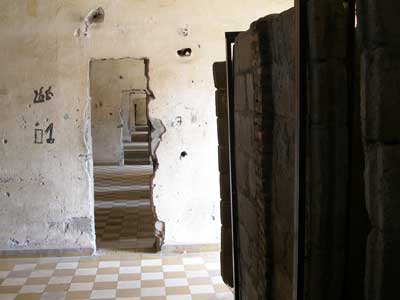
Detainment cells
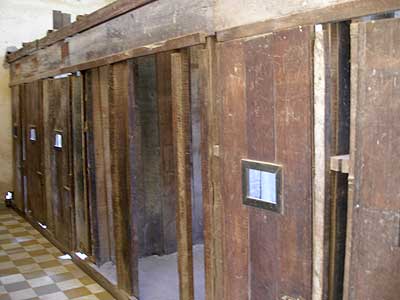

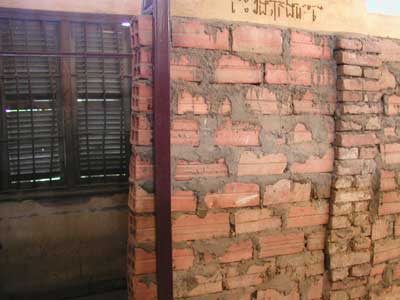
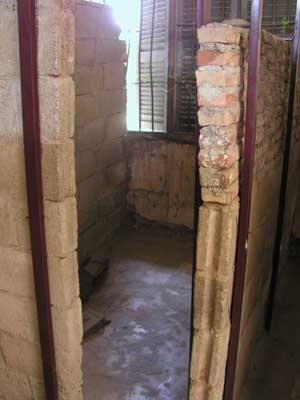
Quick brick walls had been built to form tiny cells and chains were cemented into the ground.
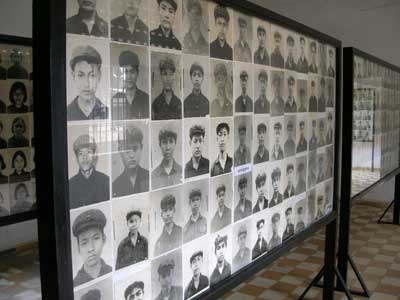
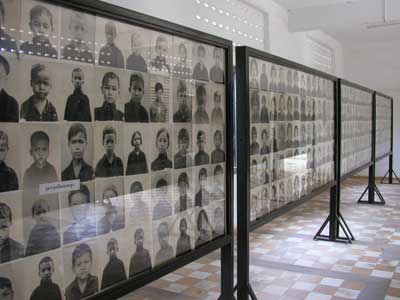
Of all the people who were brought through here, only seven survived.
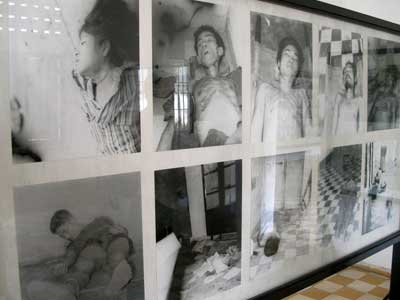


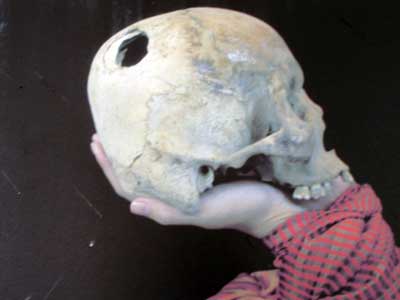
Torture chair
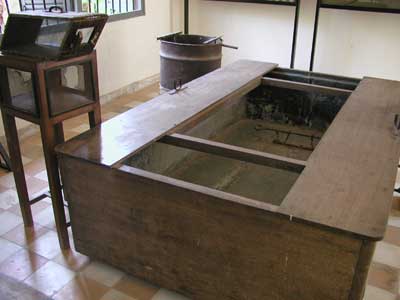

Various tortures
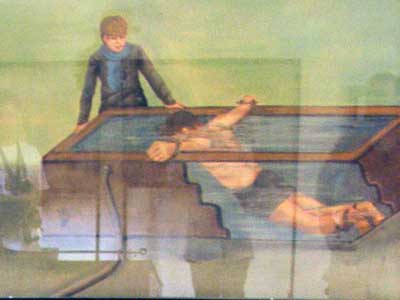
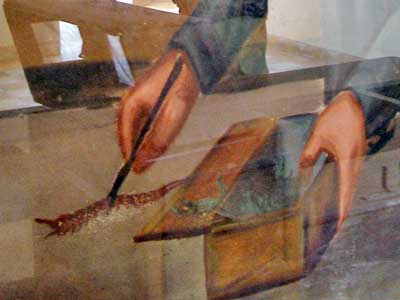
One room had pictures of Khmer Rouge participants of what they looked like then and now. Most of them had comments about how they wanted the leaders to be persecuted, but they didn't seem to realize that might include them too.
Since this whole thing took place only some 30 years ago, and many of the participants back then were teenagers or even children (because they were easily brainwashed and the power of a gun was an almost irresistible temptation), almost everyone you met over 40 had suffered through this somehow. Our driver, Sophet, was in his 40s. Which side had he been on? The child who happily shot enemies of the state? Or did he have to watch his whole family be tortured and slaughtered?
return • continue

